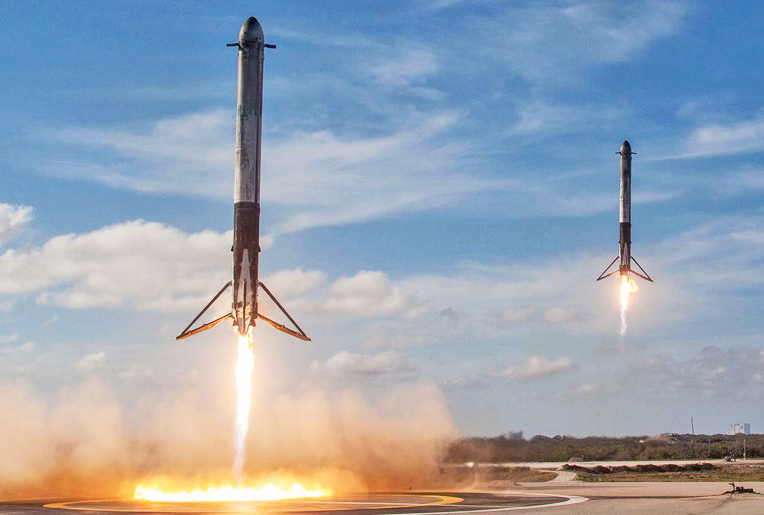The World Was in Awe of The Space X Falcon Heavy Launch, And with Good Reason.
Like many social media users, you may not have known about the Space X Falcon Heavy launch before it happened on Tuesday, Feb. 6, 2018, from Cape Canaveral. But in the hour before the launch millions of people who were not aware of the launch that day, and maybe even the entire program, were suddenly glued to their device screens as video of the launch preparation, the stunning launch itself and then the science-fiction like recovery of the boosters reached them via social media.
While Falcon Heavy represents a significant revolution in space technology it represents an even larger shift in media, and that shift was nothing short of spectacular.

The last time an Apollo mission took off from Cape Canaveral was over 45 years ago, and the last NASA space shuttle launch was nearly 7 years ago. That means there were many young viewers of Falcon Heavy who had never seen anything like this in their lives. And for older people who lived during the Apollo and more recent space shuttle program, this is what it felt like for your chest to swell with pride and your eyes to bulge in amazement at the space program.
Falcon Heavy is currently the largest lift capacity rocket on earth, with a staggering 70.3-ton payload lift capacity. That is the equivalent of hurling five and half loaded school busses into orbit and shattering the sound barrier in a little over one minute. At launch the spacecraft developed five million pounds, or 2,500 tons, of thrust.

It is possible the Falcon Heavy Launch may have been seen by more people over more media than perhaps any other space mission including the Apollo moon landings. Access to media, internet technology and other evolutions that happened since Apollo and even the shuttle program made it easier for the world to see Falcon Heavy fly. The commercial origins of Falcon Heavy may cross political boundaries more gracefully than a state-sponsored space program largely originating from national and even military agendas. Space X Falcon Heavy is a human endeavor that belongs to all of the planet, not just one nation.
Another part of the media revolution associated with Space X Falcon Heavy was many people’s first exposure to a new voice of space exploration reporting, journalist Loren Grush. Grush comes from a family of two NASA engineers. She has written and prepared video technical features for Fox and ABC News networks, Popular Science, Digital Trends and The New York Times. Like her predecessor from the Apollo mission television coverage, Walter Cronkite, Grush expresses a genuine reverence for the wonder of space technology and has the ability to connect with and share her knowledge and enthusiasm with audiences in an evolving media. She is a relevant and credible voice to report on the modern space program. Millions of people around the world met Loren Grush for the first time during her interview with Space X entrepreneur Elon Musk prior to the launch, and her commentary on the program. As Space X Falcon Heavy progresses, we will hear more from Loren Grush and reporters like her.

Another brilliant surprise for viewers of the Space X Falcon Heavy Launch was seeing the recovery of the twin boosters back at Cape Canaveral. Like something from a cheesy 1950’s “Mission to Mars” sci-fi matinee the boosters levitated downward as they seemed to defy physics. Their braking rockets fired and their tripod landing gear extended in a stunning synchronized landing as no less than four sonic booms from their re-entry thundered over the cape. Most viewers had never seen anything like this.
But revolutions in media and space technology notwithstanding, the Space X Falcon Heavy launch was nothing short of stunning. In an era of social media laced with cynicism, criticism and negativity the Falcon Heavy launch was as bright a spot as the two-hundred fifty-foot-long beacon of space fire that erupted from her boosters at launch.
Despite some low-key criticism of the commercial feel of tossing a Tesla car into space with live video streaming and the relatively minor bauble of losing the main booster during its recovery at sea, this was a stunning debut for the Falcon Heavy to the world.










